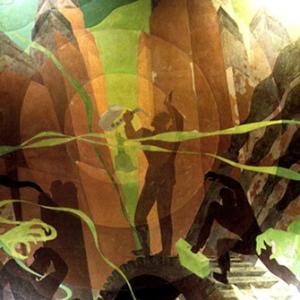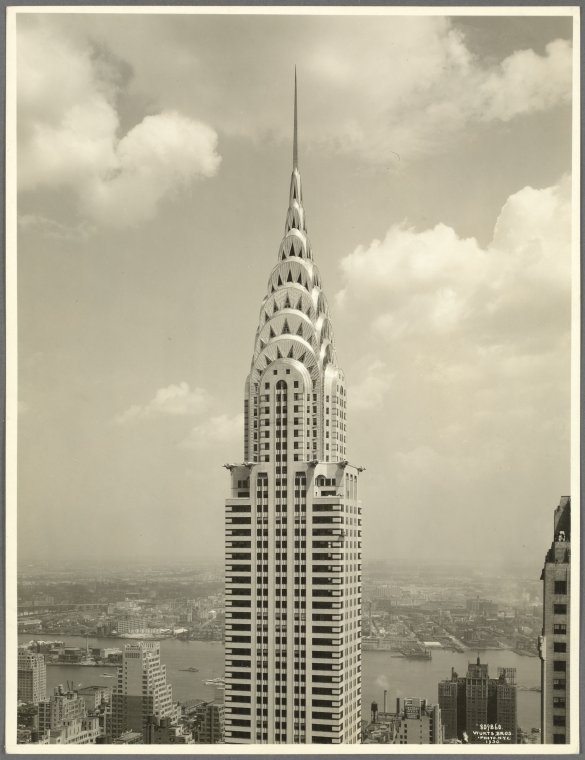Collections: The Heart of the Library
 'Aspects of Negro Life' (click to see more images from the Library's collectionsBuilt carefully by generations of curators over the past 160 years, the collections of The New York Public Library now exceed 50 million items. In combination with the lending collections, it is the most comprehensive library collection ever brought together for the free use of the public.
'Aspects of Negro Life' (click to see more images from the Library's collectionsBuilt carefully by generations of curators over the past 160 years, the collections of The New York Public Library now exceed 50 million items. In combination with the lending collections, it is the most comprehensive library collection ever brought together for the free use of the public.
The collections have been organized into more than 100 major topics, ranging from “Accents and Dialects” to “Women's Studies” with others such as “Baseball,” “Computer Science,” “Gay and Lesbian Studies,” “Immigration,” “Judaica,” “Theatre,” and “U.S. History” in between. The Library’s strength in three areas in particular is so great that major facilities have been built to house them: The New York Public Library for the Performing Arts (LPA), at Lincoln Center; the Schomburg Center for Research in Black Culture, in Harlem; and the Science, Industry and Business Library (SIBL), in midtown Manhattan.
LPA is itself a treasure house, with music manuscripts, like Claude Debussy’s beautifully rendered Les papillons, as well as hundreds of thousands of other documents, photographs, sound recordings, films, and videos related to music, theater, and dance. Here, as everywhere else in the NYPL system, high culture happily mixes it up with more populist fare, like a smashing poster promoting the Ringling Brothers and Barnum & Bailey Circus. The Schomburg’s collection documents the history and experiences of peoples of African descent throughout the world; unique among the NYPL’s libraries, it actively collects art as part of its mission, including Aaron Douglas’s epic oil on canvas, Aspects of Negro Life: Song of the Towers. A cigar box label for the Henry George cigar is one of the myriad fascinating items from the history of business found in SIBL’s collection.

Avenue and East 43rd StreetFor almost a century, students and scholars have come to the Library’s landmark building on Fifth Avenue and 42nd Street (today known as the Stephen A. Schwarzman Building) for firsthand access to materials from all eras. For certain subjects, like the history of New York City, riches can be found in many different mediums, maps – for example, John Bachmann’s stunning view of Central Park – and photographs, like the Wurts Brothers’ iconic view of the Chrysler Building.
Very often, the expendable products of bygone ages are viewed today as treasures, and the Library’s stacks of old newspapers, including the long-defunct New York Atlas, have provided endlessly rich material for scholars and writers. The building is also home to the Library’s historic children’s materials, including the original stuffed animals that inspired the Winnie-the-Pooh children’s classics, as well as circulating collections for children.
Today the Library continues to make major investments in its most distinctive collections, especially in unique primary source materials, like the records of the 1939–40 New York World’s Fair. The Library owns many important manuscripts, such as Walt Whitman’s delicately scripted “A Child’s Reminiscence”, and is continuously adding entire archives to its holdings, a recent example being the Katharine Hepburn Papers from the legendary actress’s stage career.
Other examples of key collections include photography (with more than 400,000 images in almost every photographic process), such as Edward S. Curtis’s unforgettable depiction of an Apache Scout, and prints, with more than 200,000 remarkable examples of original works of art on paper, such as James Gillray’s etching Harmony Before Matrimony.Two telling examples show how the past and future bounce merrily against one another within the Library’s domain. Giulio Clovio’s Towneley Lectionary is one of dozens of sublimely illuminated manuscripts from the earliest days of book production owned by the Library. But equally important is the acquisition of a newer means of information diffusion – digital scans (of images and entire books), downloadable audiobooks and videos, and electronic databases. The Library currently subscribes to hundreds of databases, ranging from medicine, law, and science to community resources, employment, and homework help. With the enormous new field of digital collections, the Library now provides its users with the starting point for a rich voyage of discovery on the Internet.